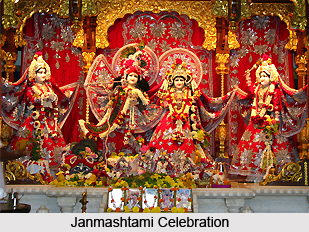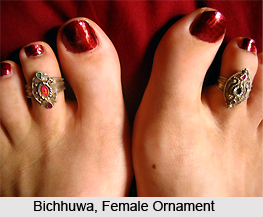 Culture of Rudraprayag district is a blend of different customs and lifestyles. A variety of traditions and beliefs are prevalent in the district which have formed an integral aspect of the district culture. Diverse festivals are celebrated in the district in which people belonging to different faiths participate with equal vigour. The attires of people are chosen according to the environment and availability. The same trend is however witnessed in case of food habits also which are adopted by the people according to the climate and production. Different and vibrant cultural practices of the district significantly contribute into the cultural diversity of the country and enrich its cultural heritage.
Culture of Rudraprayag district is a blend of different customs and lifestyles. A variety of traditions and beliefs are prevalent in the district which have formed an integral aspect of the district culture. Diverse festivals are celebrated in the district in which people belonging to different faiths participate with equal vigour. The attires of people are chosen according to the environment and availability. The same trend is however witnessed in case of food habits also which are adopted by the people according to the climate and production. Different and vibrant cultural practices of the district significantly contribute into the cultural diversity of the country and enrich its cultural heritage.
Fairs and Festivals of Rudraprayag District
Fairs and festivals of Rudraprayag district form an integral part of its culture. A plethora of festivals are celebrated in the district with great pomp and glory. The major festivals observed here include Ramnavami, Nagpanchami, Raksha Bandhan, Janmashtami , Dussehra, Diwali, Makar Sankranti, Shivaratri and Holi . Unique religious rituals and great religious fervour can be witnessed during these festivals. Traditional songs and dances also accompany the celebrations. Apart from these, grand fairs are also organized in the district which includes Gaucher Mela, Bishwat Sankranti, Nautha fair and many more which serve as means of cultural gatherings.
 Food of Rudraprayag District
Food of Rudraprayag District
Food habits of Rudraprayag district do not exhibit much uniqueness and is quite similar to other parts of the country. Vegetarianism is prevalent. Staple grains are usually consumed by the people including wheat and rice. Jhanjora, mandua and maize are the coarse grains and are usually taken by the poorer sections. Main pulses consumed in the district are masor, lopia, tur, soontha, bhatt, gahat and urad. People belonging to Hindu religion prefer vegetarian diet whereas Sikhs, Christians and Muslims are habitual of non vegetarian diet.
Jewellery of Rudraprayag District
People of Rudraprayag district are fond of wearing traditional jewelleries which showcases a unique aspect of their culture. Toe rings of silver, also known as Bichhuwas, are the ornaments of married women. Small studs or Keels are worn on the left nostril. Other ornaments which are common among the women and girls of the district include Naths (nose rings), Hansulis (jewellery worn round the neck) and Chandanhar (necklaces). Earrings of silver or gold are also worn. The jewelleries are often embellished with coins, colourful beads or claws and teeth of the panther. Women further adorn themselves with silver amulets which are set with Turquoise. These are worn around arms and necks. Copper or silver Anklets are worn specially by the married women. Silver and gold bangles are also common. Bhotiya women of the district are fond of Ivory Jewellery. Among the men, gold or silver chains and rings are common.
Dresses of Rudraprayag District
People of Rudraprayag district wear dresses that suits to their economy and hilly environment. The common dresses of men include Kurta - Pajama and shirt. Sadri is the term for jacket which is worn by the men. A knee length coat is also the preferred attire for men during winters. However, modern and western attires are also becoming a common choice of the district folks. Women usually wear saris. During winters they wear Angra, which is a kind of jacket. Salwar Kameez is also worn by the women. The Bhotiyas who dwell in hilly regions usually wear woollen clothes. Ghagra (a long skirt), Angras and Phantu (coloured scarf) along with Kamarband (a soft decorative belt) and Orhni (a long scarf) form the traditional attire of women of rural areas.






